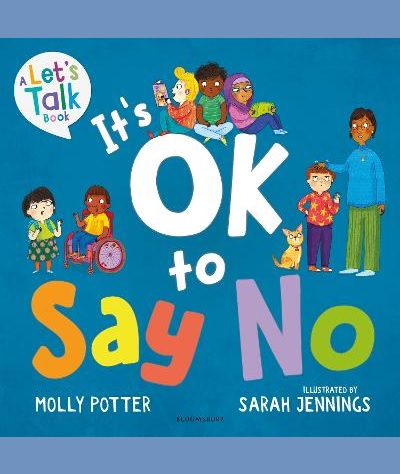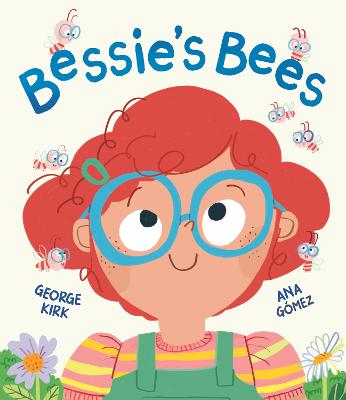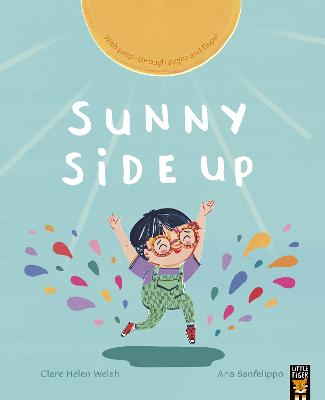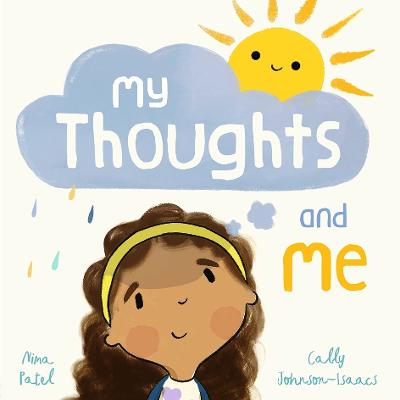It's OK to Say No: A Let's Talk picture book to help young children understand giving and getting consent

By Author / Illustrator
Molly Potter, Sarah Jennings
Genre
Mental Health & Wellbeing
Age range(s)
5+
Publisher
Bloomsbury Education
ISBN
9781801995382
Format
Hardback
Published
08-05-2025
Synopsis
From PSHE expert and bestselling author of How Are You Feeling Today? comes an important and reassuring picture book, perfect for starting conversations with young children about consent.
This book is all about asking for, giving and not giving permission, which is usually called consent. Using child-friendly explanations and colourful illustrations by Sarah Jennings, this book helps you to teach children that it's OK to say 'no' when they feel uncomfortable, and that they should respect when others say 'no' to them too.
The topics that feel difficult to discuss with your children are probably the ones you most need to talk to them about. From personal space to sharing, and from privacy to asking for help, It's OK to Say No explains why learning to respect yourself and others is so important. Featuring extra notes for grown-ups on tackling these sensitive topics with little ones, this reassuring picture book is the perfect resource to read with children aged 4+ and start important conversations about respect and consent.
Let's Talk books help you start meaningful conversations with your child. Written by an expert and covering topics like feelings, relationships, diversity and mental health, these comforting picture books support healthy discussion right from the start. Find out more in ReadingZone's indepth Q&A with author Molly Potter.

Reviews
Sue
Part of the Let’s Talk… series, It's OK to Say No is a well considered, reassuring book which introduces children to the idea of consent and personal boundaries. Starting with an explanation of what 'consent' means the book then explores a whole range of situations and the emotions which children might feel when in a similar position.
It begins with feeling comfortable/uncomfortable before moving on to giving, and asking for, consent. Appealing, colourful illustrations and simple, clear sections of text make the book accessible to a wide reading audience. The book also makes the point that there is a difference between feeling uncomfortable about something and just not wanting to do it, giving clear examples of when an adult might expect something to be done like teeth cleaning or tidying up. Other considerations like being uncomfortable/comfortable with different things, changing our minds are also explored before the book moves onto what people usually keep 'private' and why touch needs consent.
This is all very carefully and thoughtfully handled, presented in age appropriate language and focusing on everyday situations and concluding with step-by-step advice on how to say 'no' and who to turn to for help if needed. It is perfect for starting conversations with even the youngest children about consent and respect for their own, and others', boundaries.
Additional advice is included at the end of the book for grown-ups, offering further guidance for how to support children develop this sense of respect for themselves and for others. Although pitched at younger children, there is nothing to stop parents, teachers or other adults using the book with mixed aged siblings, friends or classes of older students. An excellent addition to bookshelves!
32 pages / Reviewed by Sue Wilsher, teacher
Suggested Reading Age 5+
Wendy
It's OK to Say No is the sort of book that works best on a one to one basis, shared between a child/young person and a trusted adult, rather than as a group read, to start a conversation about consent and what it means. The concept it presents is seemly quite simple - it's okay to say no. However, the first few pages contain a huge amount of text discussing the concept of consent, making it quite a complex read.
In terms of value, it certainly provides a lot of food for thought and to help find out how much or how little a child already knows about a particular area or if it's not even come up on their radar yet. Topics covered include 'What is consent?', 'When should you ask for consent?', 'How do you ask for consent?', 'Are there different ways of saying yes?', 'What should you do when someone says no?', 'Why does touch need consent?', 'When might you need help?'. These are all potentially sensitive areas to discuss but the use of illustration, speech bubbles and bright colours make the book an inviting object to focus on while the conversation takes place, in case either adult or child feels a bit uncomfortable.
It would be very easy to dismiss this book as 'woke' , or even suggest that the concepts, dilemmas and solutions may shift again in the future, as society changes what it thinks and feels is acceptable behaviour. However, this argument is tired and outdated; it's time for adults to accept that we won't return to the 'good old days' and that these social issues matter to our young people.
This book may be a key step forward in helping break down old fashioned attitudes and support children and young people in finding their voices. In a week where I have had a conversation with an adult about whether she should ask her children's consent before uploading photos to social media, there clearly is much discussion still to be had.
32 pages / Reviewed by Wendy Kelly, teacher
Suggested Reading Age 7+
Other titles
-
 Bessie's Bees: A story about new experiences with a neurodiverse child at its heart
5+ Mental Health & Wellbeing 20250703
Bessie's Bees: A story about new experiences with a neurodiverse child at its heart
5+ Mental Health & Wellbeing 20250703
-
 Bea's Bad Day: A Big Bright Feelings Book
5+ Mental Health & Wellbeing 20240704
Bea's Bad Day: A Big Bright Feelings Book
5+ Mental Health & Wellbeing 20240704
-
 Sunny Side Up
5+ Mental Health & Wellbeing 20240509
Sunny Side Up
5+ Mental Health & Wellbeing 20240509
-
 My Thoughts and Me
5+ Mental Health & Wellbeing 20250703
My Thoughts and Me
5+ Mental Health & Wellbeing 20250703
